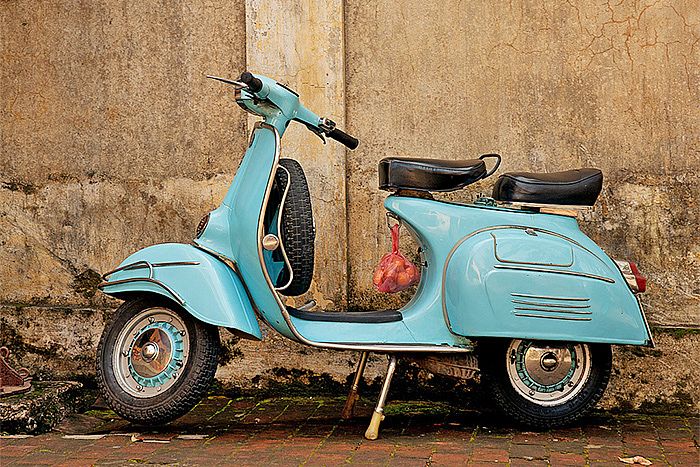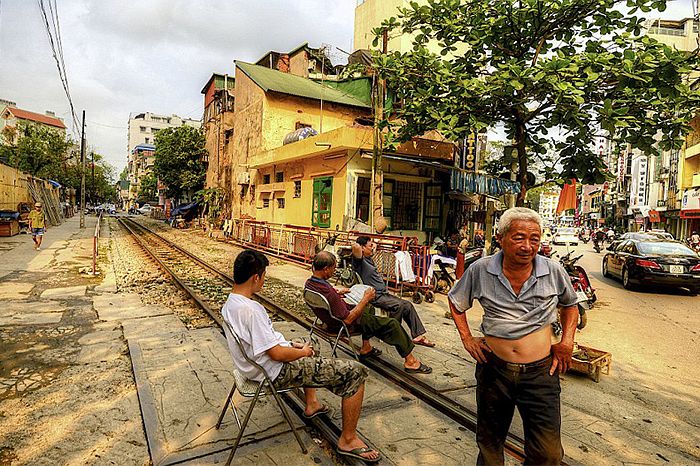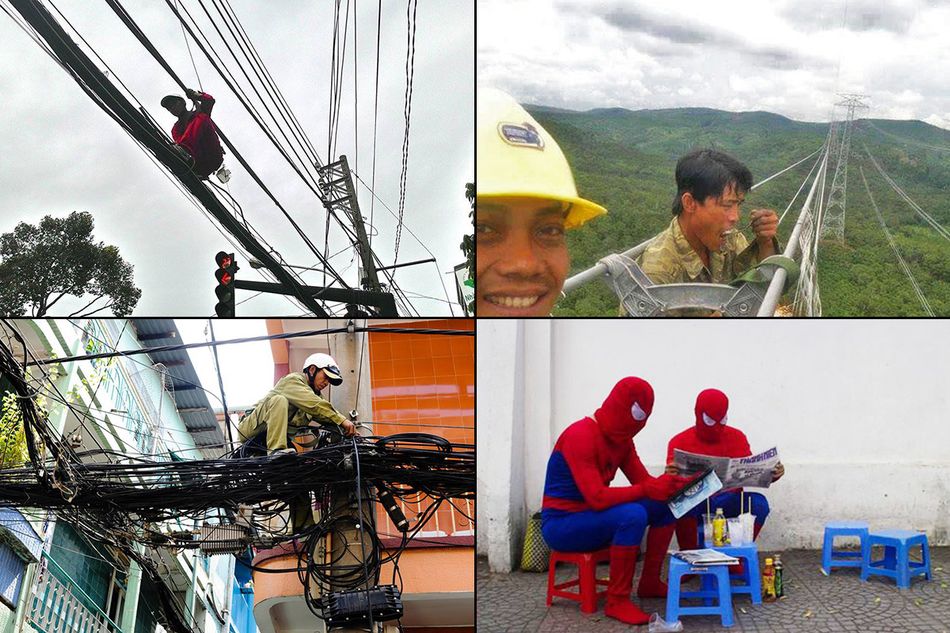When Enrico Piaggio first saw the newly designed Vespa scooter, he exclaimed, “Sembra un Vespa it resembles a wasp!”. (The Vespa means wasp in Italian.) Out of a designer’s personal loathing for motorbikes, the ‘Wasp’ was born.
The Vespa first built in 1946 when Enrico Piaggio asked his aeronautical designer and inventor, Corradino D’Ascanio, to redesign what was originally a small motorcycle made, believe it or not, for parachutists.
Corradino found motorbikes bulky and uncomfortable. The wheels were too difficult to change after a puncture, and worse still, they were filthy from the drive chain. Through his aeronautical experience he eliminated the chain, imagining a monologue vehicle with a direct mesh. To make it easier to ride, he put the gears on the handlebar to simplify the gear changing process. And rather than a front fork, he designed a supporting system, similar to the wheels of an aircraft.
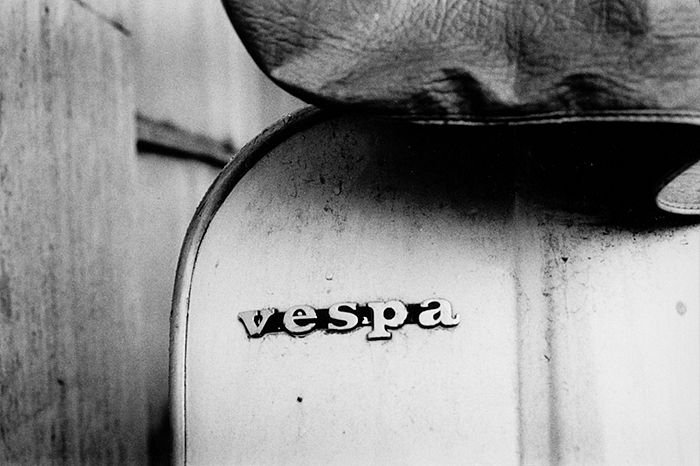
Image via Thomas Berg.
Finally, he designed that distinctive body shape that would prevent the driver from getting dirty en route. The Times called the Vespa, “a completely Italian product, such as we have seen since the Roman Chariot.” Corradino called it “the creation of a modern means of transport, with the popularity of a bicycle, the performance of a motorbike, and the elegance and comfort of a car.”
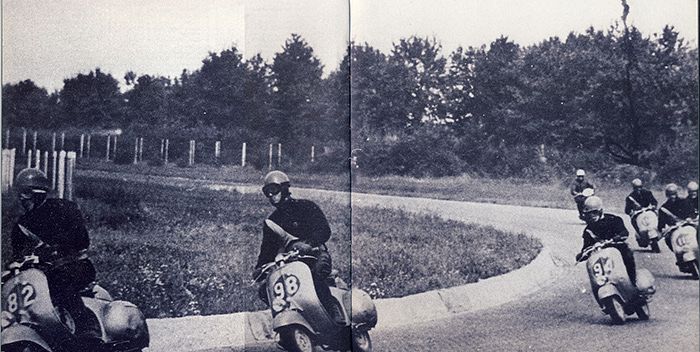
Image via ScooterNova.
This icon of twowheelers started life as a highly functional runabout, perfect for postwar Italians. But the Vespa hasn't just been a market phenomenon since those early days. Anyone who rides a Vespa will testify this feeling of tenderness an appreciation for the ride, rather than a headlong rush towards to the destination. And you get that feeling that a Vespa is a transport of delight for another reason. It provides an instant social identity. The scooter has become a symbol of lifestyle for freewheeling subcultures. In fact the Vespa has had a profound impact on productivity, culture and society. It was loved by the Beatles in the ‘60s and London’s Mod Rockers in the ‘80s.
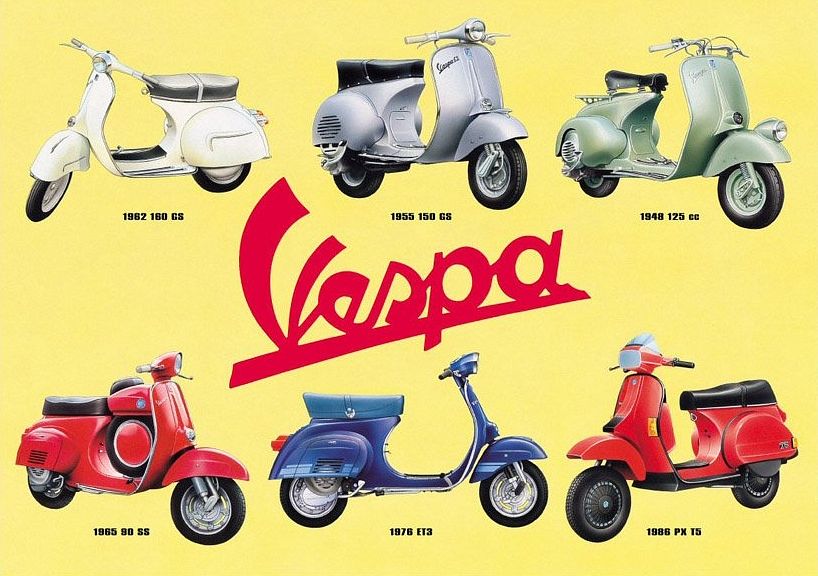
Image via transpressnz.
It was in the ‘Dolce Vita’ years of the ‘60s that the Vespa became a synonym for scooter. Foreign reporters described Italy as ‘the country of the Vespa’. It made its mark on art, music, literature, advertising and cinema. Used in Fellini's ‘La Dolce Vita’ and William Whyler’s ‘Roman Holiday’ with Audrey Hepburn and Gregory Peck, the pair were the first of a series of international actors and actresses to be seen on the world's most famous scooter. The Vespa has been a travel companion for names like Raquel Welch, Ursula Andress, Geraldine Chaplin, Joan Collins, Jayne Mansfield, Virna Lisi, Milla Jovovich, Marcello Mastroianni, Charlton Heston, John Wayne, Henry Fonda, Gary Cooper, Anthony Perkins, JeanPaul Belmondo, Nanni Moretti, Sting, Antonio Banderas, Matt Damon, Gérard Depardieu, Jude Law, Eddie Murphy and Owen Wilson.
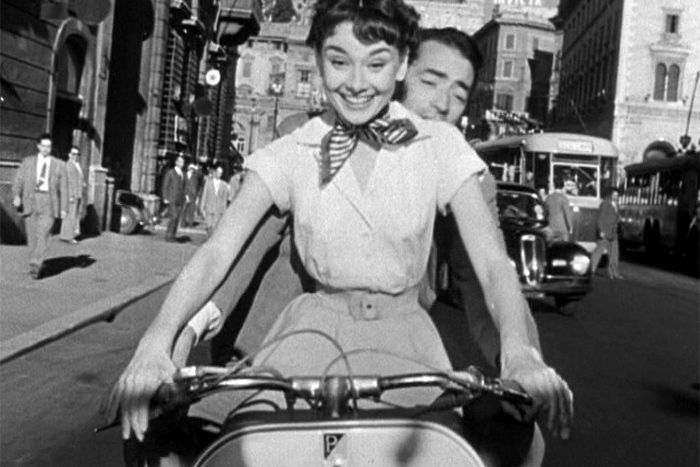
Audrey Hepburn driving a Vespa in the film Roman Holiday. Image via ambradambra.
When Italian journalist, Giogio Bettinelli, rode the Vespa for 295,000 miles from Rome to Saigon he wrote, “In the middle of the snow, struggling over a riverbed, or clambering over dunes in the desert…you know the Vespa really makes you feel softhearted.”
The Vespa made a profound mark in countries as far away as Vietnam. Brought by French imperialists to Vietnam in 1956, they used it for leisurely rides around the old streets of Ha Noi and Sai Gon, which would easily remind them of the ancient roads in Rome or Florence. In fact, after Italy, Vietnam became the second most popular land of the Vespa. The power of Vespa’s appeal was that it fitted seamlessly into Vietnamese life, even though it was borne of a distant culture.

Image via Bao Moi.
Check back on Monday for Part II where we take a look at the how a market for finding and restoring old Vespas has taken off in Vietnam.
[Top image via Ian Lewis]

